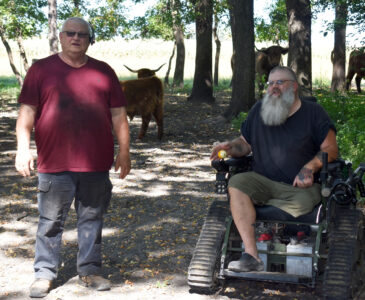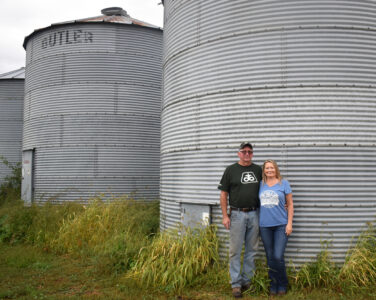Agencies, county, farmers keep eye on feedlots and water, ground safety
FAIRMONT – Keeping the ground and water of Martin County safe from contamination via manure and fertilizer is an ongoing, concentrated task via multiple angles.
Nitrates, the contaminant often introduced via runoff from fertilizer use, were found not to be in violation of the Environmental Protection Agency’s (EPA) limit in the 2024 Water Quality Assessment. With a limit of 10 parts per million, Fairmont drinking water has a highest test of 3.30 ppm, with the test results ranging from 0.81 ppm to 3.30 ppm.
Martin County Planning and Zoning Director Pam Flitter said overall, she has found the usage of manure and fertilizer by area farmers to be within acceptable ranges.
“Most of our farmers, they’re large enough that it’s a business,” Flitter said. “They hire people to be able to do testing for them and tell them what they need. In the earlier years, they would just haul out the field and dump it to the closest location that they could. Now everything is done based on economic rates.”
In this way, Flitter said farmers themselves prevent contamination and over-usage because they do not want to overpay or waste valuable resources.
“We’ve got a really good system in which we have a great relationship with the producers,” she said. “I think the producers take it very seriously. They are very good about providing the information we request. For us, it’s just making sure they’re within those guidelines. If they’re not, then how do we make that work?”
In her experience, she said it has been fairly rare for a farm in Martin County to be found over-applying. The process for analyzing and identifying usage levels is done on a four-year rotation. Though they are only required to do 7 percent, or around 35 sites a year, Flitter said they generally do 70 to 100 inspections a year, depending on who’s all due for inspections.
“Each county site registered for over 50 animal units, or over 10 animal units in shoreland, is inspected on a four-year rotation,” Flitter said. “That rotation consists of a number of things, making sure that they’re registered for the correct numbers they say they’re registered for. We take a look at the building itself, making sure everything looks good around the building. Is it being properly maintained? Do they have any severity of cracks or concerns with the building itself?”
The Minnesota Pollution Control Agency (MPCA) said they are able to provide technical assistance and conduct inspections for environmental requirements.
“The MPCA and delegated counties have protocols to determine compliance with manure application rate guidelines,” its statement says. “Upon identifying alleged over-application of manure, the MPCA and delegated counties use a variety of methods and tools to educate feedlot owners and to respond to instances of non-compliance.”
By utilizing all the tools at their disposal, they can prevent potential water and soil contamination issues.
“The requirements found in the Animal Feedlots Rule prevent manure and manure-contaminated runoff from polluting surface and ground waters,” the MPCA said. “This is accomplished in a variety of ways, including permits, discharge standards, location restrictions, construction requirements, and land application and stockpiling rules.”
CW Pork Co-Owner Charles Patsche said they have 6,500 pigs, which produce on average around 225 acres worth of manure per year. Overall, she said they use around 1/3rd manure and 2/3rd commercial fertilizer. There are several rounds of testing to determine their best possible practice.
“We start with the soil test first to see what the soil needs,” Patsche said. “Second, we test the manure to see what it has. Recommendations are given after that of how many gallons per acre should be applied to those fields that match up with the soil test.”
In addition to this, CW Pork Co-Owner Wanda Patsche said they consult with experts to take special care in just how much they apply.
“We don’t want to put too much out there,” she said. “You’re wasting it if you put too much on there. We need to have enough, because that’s next year’s corn crop. That’s their food, you know, that’s what they grow on. It’s important that we have it exactly the way it should be.”
The Patsches are also aware of the setbacks they have around their land, taking care to only apply fertilizer and manure where it should be and not where it could runoff in said setbacks.
Overall, Charles said manure and fertilizer are vital to their existence as farmers.
“There’s no way we cannot add either manure or some commercial fertilizer,” he said. “Our yields would drop tremendously, and farming there would be no profit.”
For those with concerns or questions, Wanda said people should not hesitate to find information.
“Talk to a farmer,” she said. “If you’re concerned and you have some questions, I suggest people reach out, whether it’s in person or online.”
For more information, visit pca.state.mn.us/get-engaged/animal-feedlots.
*Editor’s Note: This article ran in the Sentinel’s Sept. 23, 2025 Fall Ag section.




